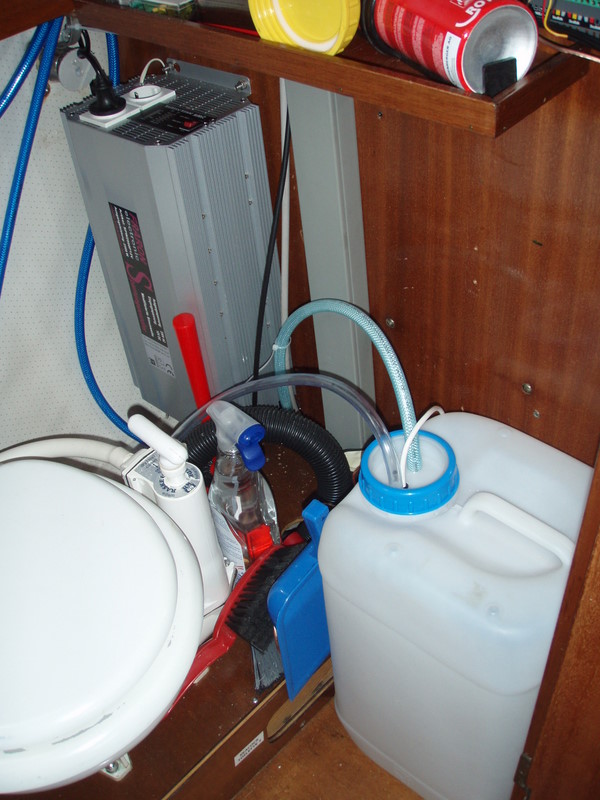A few more details about our DIY installation
(Many technical details and instructions that I found when searching the internet are listed at the end of this article. So here I'll rather describe my experiences and challenges during the project.)
Energy, Energy
Most important is the energy-question: You need a pump that makes 55 bar / 800 psi pressure and has a flow rate of about 5 liters per minute / 1.3 gpm or more. Typically, this will be a plunger pump that you might know from the high-pressure washer at your garage or at home for pressure washing your car etc. Such a pump needs about 1500 Watt or about 2 hp.
- You may use an AC-motor and a DC-AC-inverter,
- or you may use a 12V DC motor,
- or you may use the boat's main engine and a belt drive with a clutch, similar as the compressor of the A/C in your car works.
All three methods are similar in terms of costs, the main engine driven version is certainly the most attractive one: no additional equipment necessary, no heavy electric loads (1500 Watt from 12 Volt DC means 125 Amps and wires as thick as a finger!).

As mentioned, the sea water is pumped through a membrane. Under optimum conditions the membrane itself is capable of producing almost 110 liter / 30 gall. fresh water per hour if you provide a pump with a flow rate of 7 to 8 times as high. A pump of such a flow rate (12 lpm / 3 gpm) needs about 5 hp, it is big and heavy, and it is horribly expensive. Together with an AC-engine or an electro-magnetic clutch and a belt drive a seawater resistant pump will cost about 1200 Euro / 1500 USD, maybe more.


